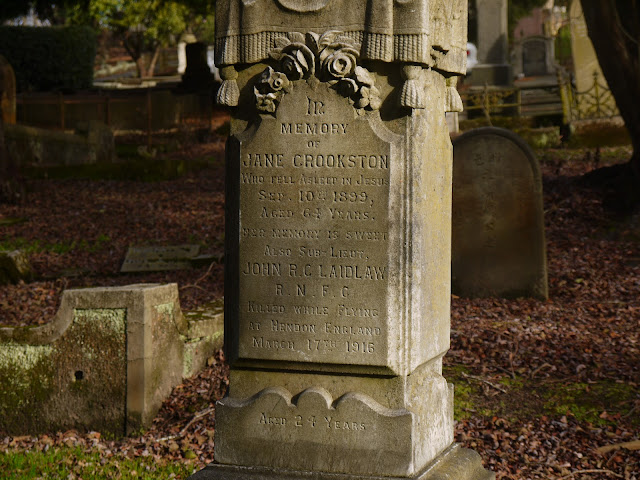Mistakes on gravestones are perhaps more common than you might think. John Laidlaw's commemoration in Dunedin's Southern Cemetery shows him as belonging to the RNFC - presumably the "Royal Navy Flying Corps." This unit never existed; there was the Royal Flying Corps, part of the British Army, and the Royal Naval Air Service. The two arms were combined to become the Royal Air Force on (to the delight of the pilots) April the first, 1918.
John Laidlaw's rank of Sub-Lieutenant is a naval one.
SUB-LIEUT. LAIDLAW.
John Ritchie Caldwell Laidlaw, the aviator whose death was announced in yesterday's cablegrams, was a son of Mr R. Laidlaw, who was until recently in the ironmongery business in Dunedin. He was 24 years of age. He proceeded Home last August at his own expense, and entered the aviation school. Cabled advice to his relatives informed them that he received his pilot certificate on March 2, and had been accepted by the Admiralty for active service with the rank of sub-lieutenant. In Dunedin he attended the High Street School, the St. Clair School, and the Otago Boys' High School. -Otago Witness, 22/3/1916.
 |
| Southern Cemetery, Dunedin |
"After four months of training he was judged a careful and steady pilot. On this day, however, his Caudron G-2 aircraft left the ground and climbed at a very steep angle until it stalled, nosed over and crashed from 250 ft., the engine never having been switched off. As these aircraft tended to climb when the control stick was released, witnesses said that it appeared that he had lost consciousness and, when the stall began, he fell onto his stick, aggravating the dive. He was 24."
-The life and times of RNAS bomber pilot Donald E Harkness. By House of Harkness.
 |
| Caudron G-3, a development of the G-2. |


No comments:
Post a Comment